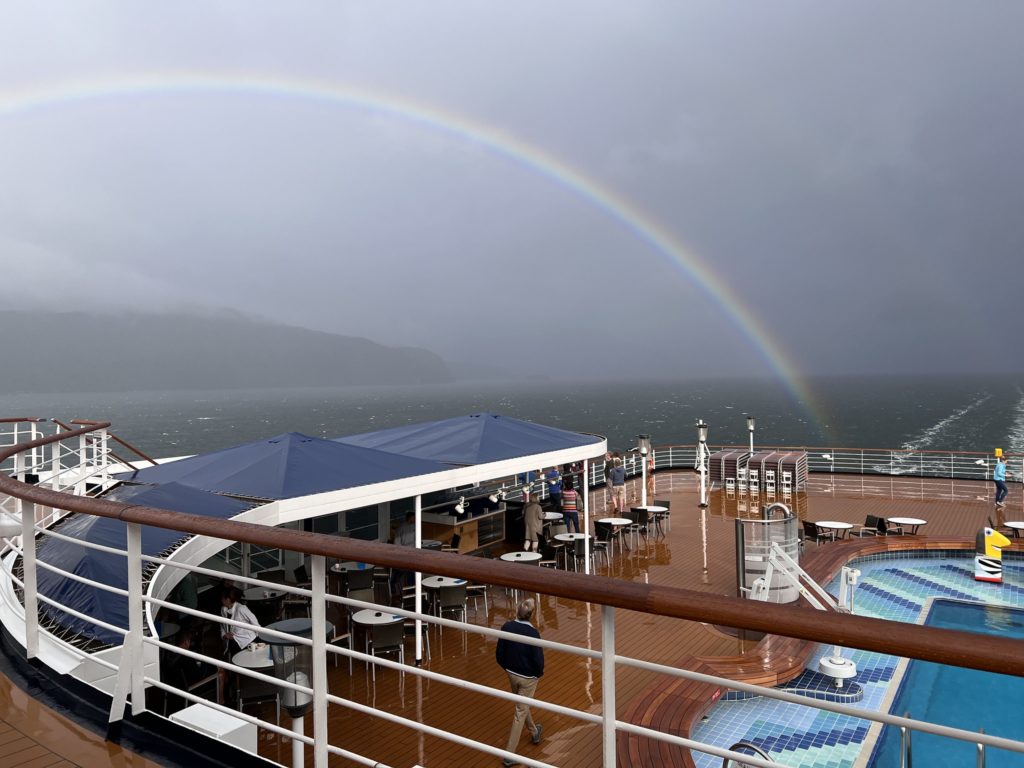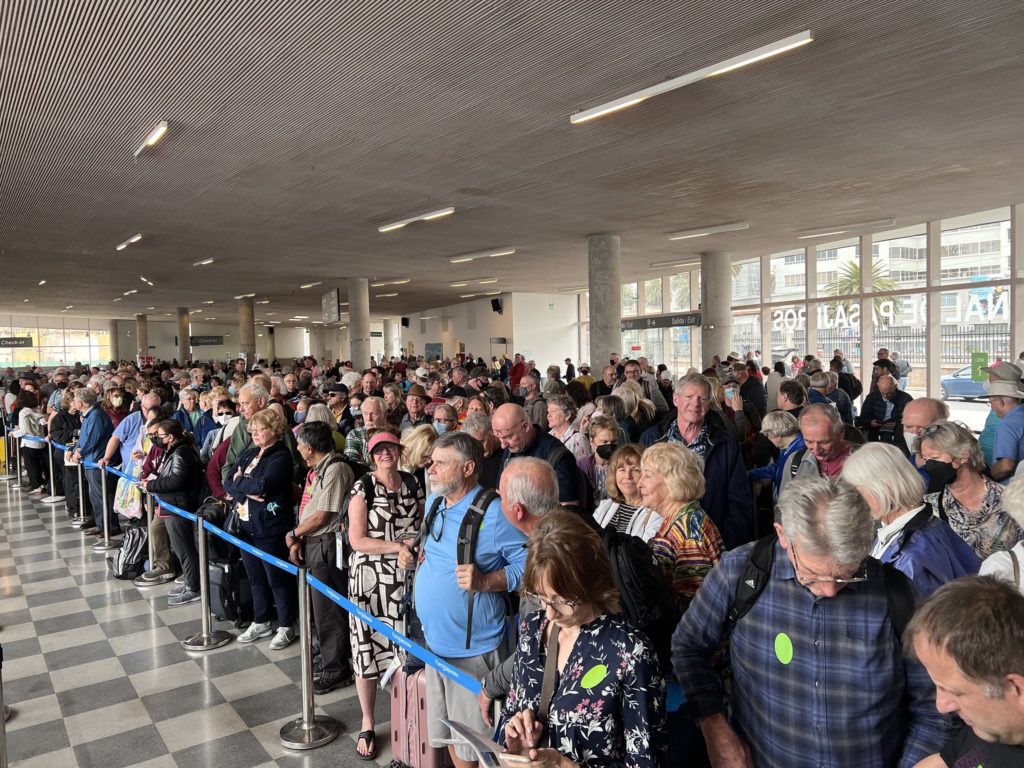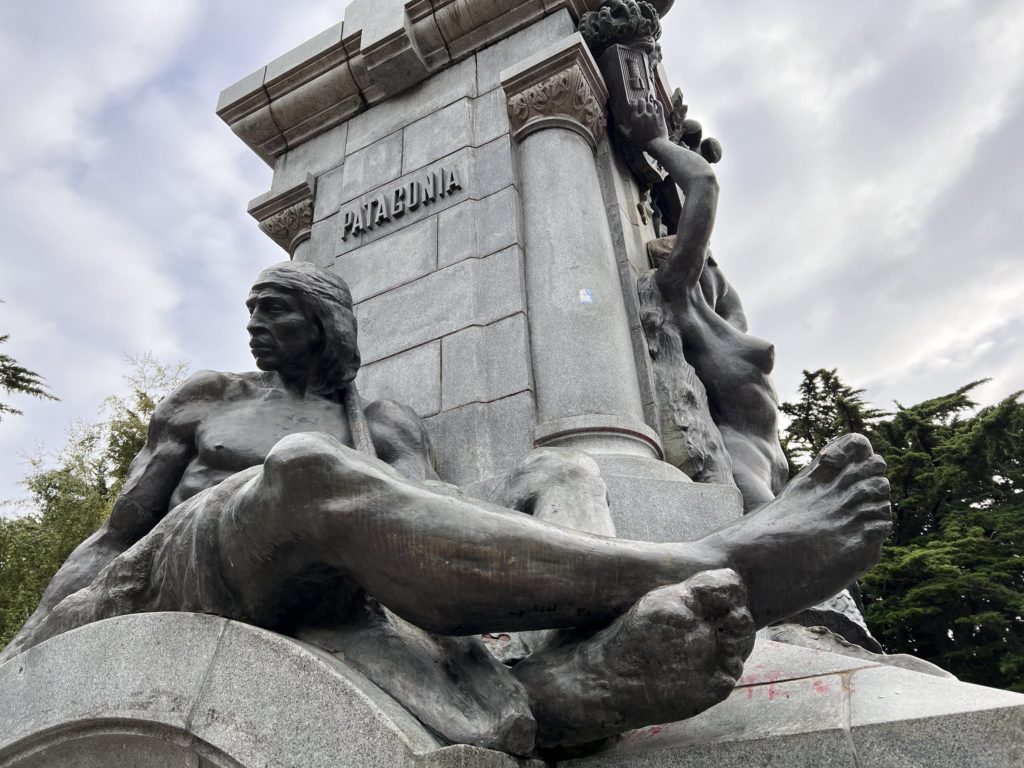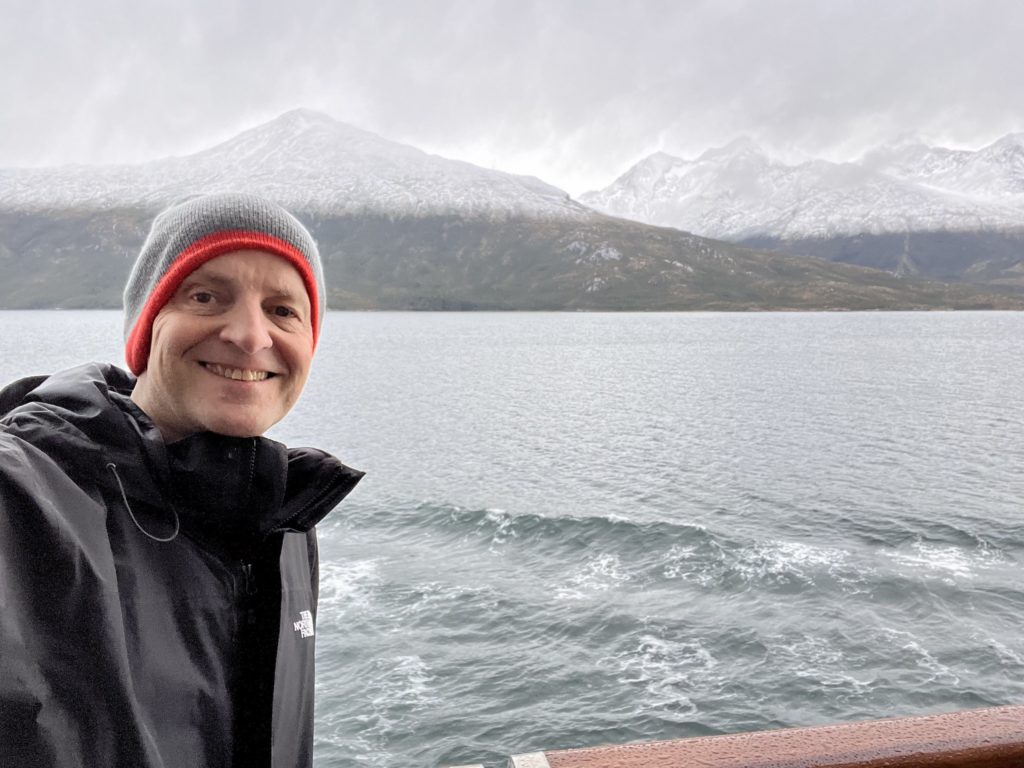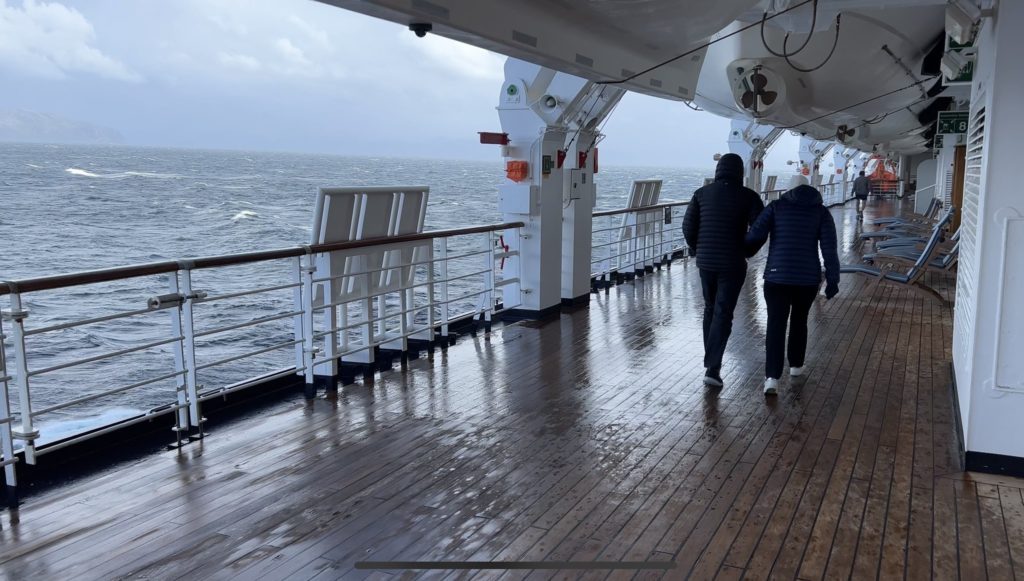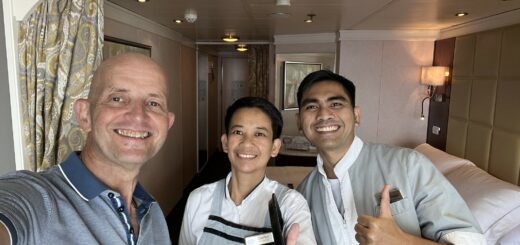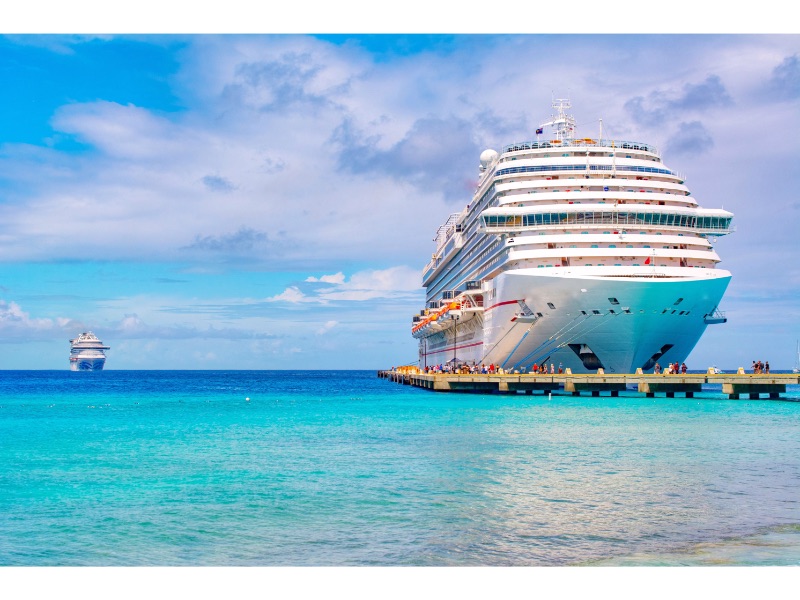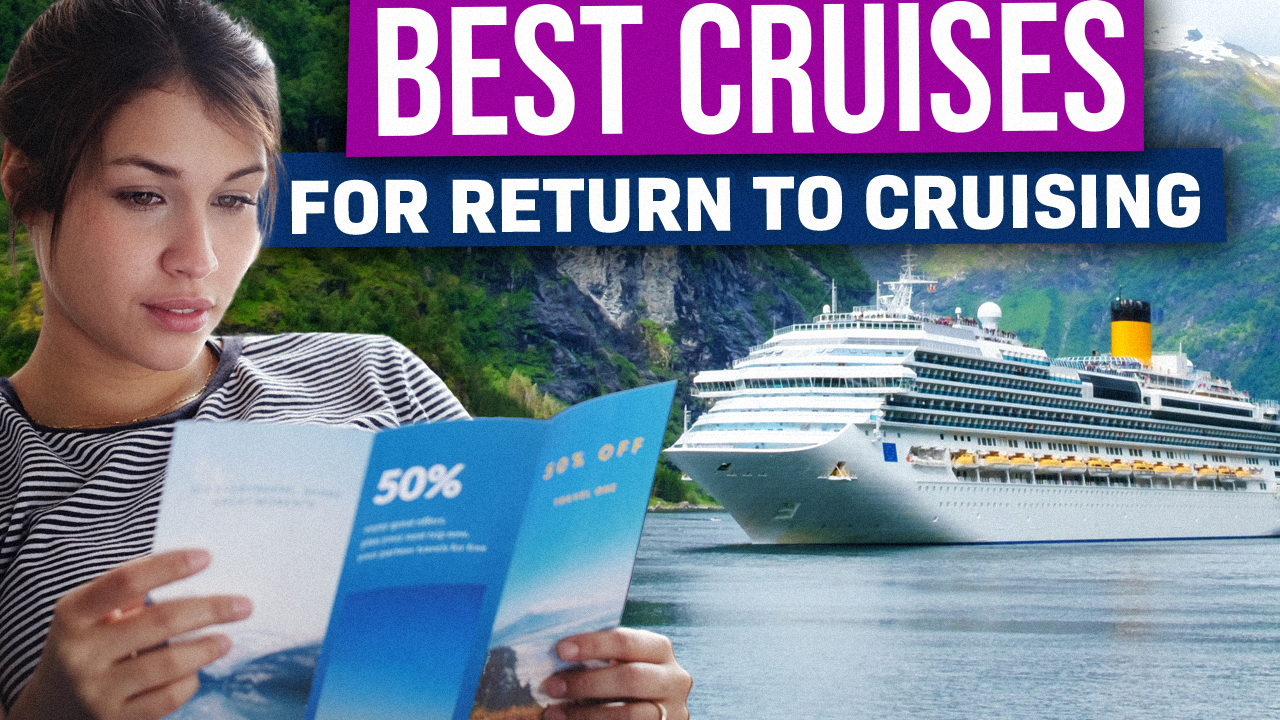I Discovered That Cruising South America Is Unpredictable
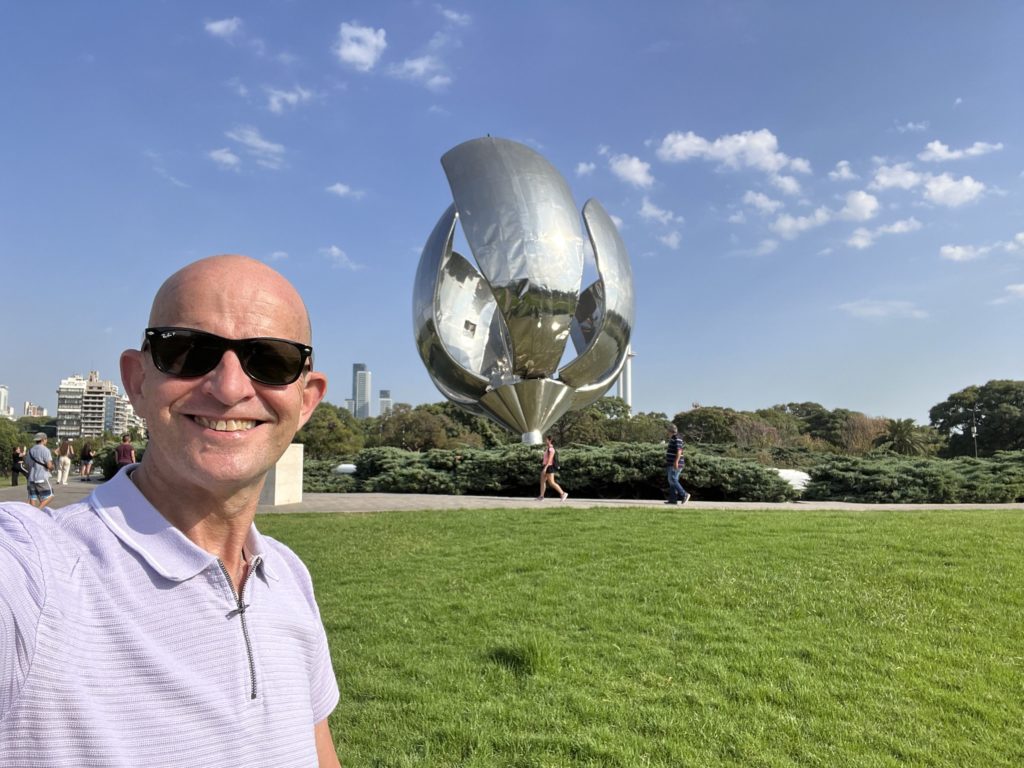 I Discovered That Cruising South America Is Unpredictable
I Discovered That Cruising South America Is Unpredictable
On one of my recent cruises, most passengers were really worried about cruising around Cape Horn at the base of South America. It is where the Pacific and Atlantic oceans smash together, and it is renowned for being one of the roughest, most treacherous parts of the world to sail in. Although, as we arrived, the wind suddenly died down, the sea calmed, and the sun came out.
This was typical of so many aspects of my cruise around South America. This constant unpredictability threw up so many things that I had neither expected nor prepared for.
I booked myself on a two-week cruise from Valparaíso Chile, around the Cape Horn, ending in Buenos Aires and going via the Falkland Islands on Holland America Oosterdam.
And that in itself caused the first misunderstanding.
It’s Not the Caribbean!
Because the trip was with a mainstream cruise line and on a ship type that usually sails in popular cruising regions like the Caribbean, Alaska, and the Mediterranean, I approached the trip as if it was just a regular cruise to a popular cruise region. But it is not. It was different and needed a unique approach. One closer to an expedition rather than a regular ocean cruise, as you will see.
Port issues
I knew it would be a long and trickier journey flying to join the cruise but once there, I found the ports were not as slick, resourced nor ran as smoothly as in the big cruising regions of say the Caribbean, Mediterranean and Alaska.
From Santiago, where I flew into, to Valparaiso, the embarkation port was a good hour and a half away. The cruise passenger terminal for check in was hard to find, as the ships dock some distance away deep within the freight area. My transfer struggled to find it.
Once there it was chaotic, as they’re not really used to dealing with lots of ships. The port agents seemed ill-prepared. Luggage handover was messy, they were late opening the check-in and didn’t organise it properly. It really was a mess. Talking to others sailing out of other South American ports, they had the same experience.
During the trip, I found the ports were mixed in dealing with us, and those we could dock in were working container ports, including in the big cities of Montevideo and Buenos Aires. In other ports we had to tender in and in some literally were just a shed, like in Puerto Chacabuco, for example.
Port Risk
Another thing anyone thinking of doing this itinerary needs to appreciate is while my cruise was 14 days, it was only scheduled to call into seven ports. So, roughly half of the days were spent at sea. On this trip, my ports were Puerto Montt, Puerto Chacabuco, and Punta Arenas in Chile, Ushuaia, Port Stanley, Montevideo, and Buenos Aires.
But you may have even more sea days than scheduled as the chance of successfully calling into all those ports is unpredictable.
We were the only cruise out of the 7 operated in the season by Holland America that got into all scheduled ports. This is largely due to wind and sea conditions, with Port Stanley in the Falkland Islands having one of the highest risks. The day before and after us other ships could not get in.
So, be flexible and open to an itinerary that may have to change. I’ll to come to the sea days later as there are some unusual things to understand here too, but I want to talk more about the ports first.
Tours and Exploring
Many guests used to Caribbean, Mediterranean or Alaska cruises, had assumed self-touring and exploring was going to be easy, appealing and the thing to do like in those regions. But it was not, and I saw many missed out on several fronts. Me included.
First, except for the big cities of Montevideo and Buenos Aires, the best and must-see sights are not close by the ports. So, not only did an excursion get me to those, but it also removed the stress of travelling independently an hour or two away from a foreign port where I did not speak the language, and constantly worrying about getting back in time for departure.
My best port experiences were when I went on the cruise lines’ tours.
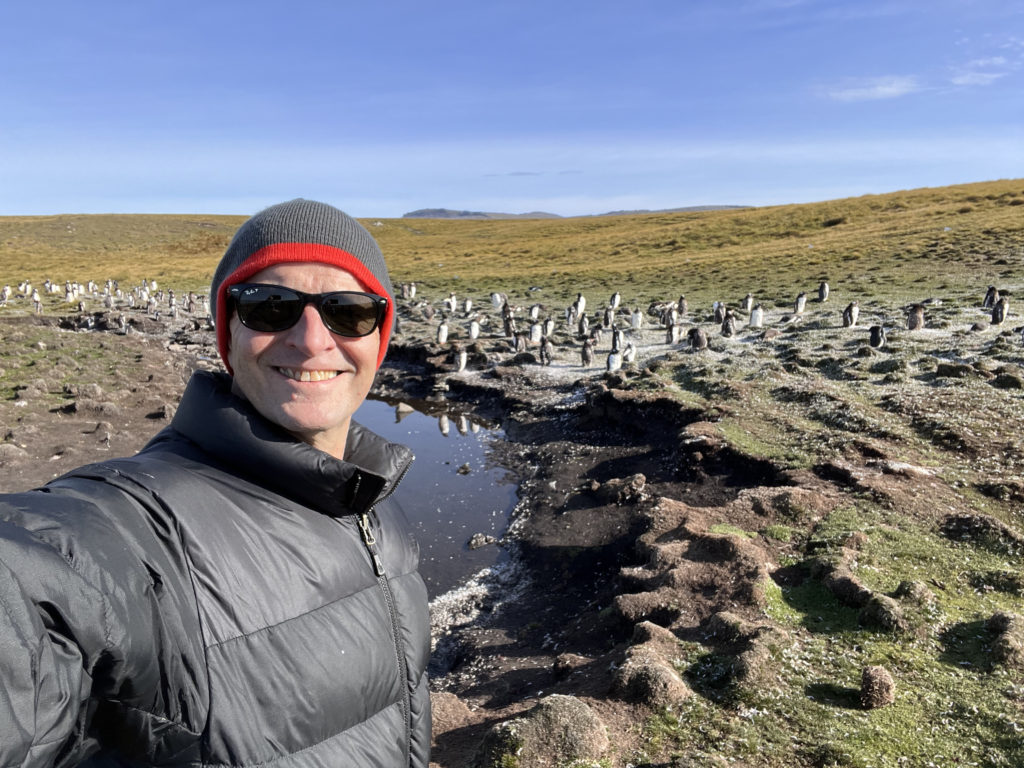
Cruise Line Tours
For example, the tour in Puerto Montt Chile, Lake Todos los Santos with a beautiful lake cruise overlooked by a snow-capped volcano and The Petrohué falls and rapids.
In Ushuaia, as the town itself is not particularly interesting, taking the “Train to the End of the World” tour deep into the Tierra del Fuego National Park was amazing.
And in Port Stanley in the Falklands, the tour that took me over an hour out of the small town to roam the Bluff Cove Penguin Reserve and hear about the war fought in the lands around it was amazing.
However, in Puerto Chacabuco I decided to self-explore, but a bad choice as it was tiny with the only attraction being some tents with local handicrafts. I missed out on the beautiful Patagonia scenery, Aiken del Sur Private Park, kayaking, and horseback riding a few hours away.
In Punta Arenas, a big city with varied architecture, it meant exploring some small museums, like the Naval Museum and Magallanes Museums, while those on tours were seeing penguins and trekking through the landscapes.
Self Exploring
In Montevideo and Bueno Aires, it was easier and more rewarding to self-explore. Across the road in Montevideo was the Carnaval Museum, a beautiful food hall, and a 25-minute walk to Independence Square.
In Buenos Aires, I got the hop-on hop-of bus from the port, getting off to visit Eva Peron’s tomb in the massive Recoleta Cemetery, Colon Theatre, and the enormous obelisk at Plaza de Mayo, and wondering at the remarkable Floralis Gloriana.
But mostly, more than any other region I have cruised in, I felt excursions were key to getting the most from this itinerary.
Book early
As there’s limited capacity in most ports, I had wisely booked way ahead of the trip. Those who waited until they were on board found most excursions were sold out.
I met so many who were disappointed because they did not get to see what they had come on the trip to see, be it the best penguin colonies in the Falklands, or the volcano near Puerto Montt.
And in most ports, there were not any, or many independent options dock side. Unlike the Caribbean, Mediterranean and Alaska there was not a stream of tour operators right there with lots of options. It was mostly taxi drivers who would offer a deal to take you around the sights.
Budget
I also found, probably due to less infrastructure and options, the excursions were expensive.
I totted up a bill of just over $1,200 dollars for the excursions that I went on. Way more per tour than other regions. I found many were shocked by how much they had to spend on tours.
Long Days
I guess another factor in the price is many excursions are longer than in other regions and involve multiple forms of transport. For example, that Puerto Montt Lake and falls tour I mentioned was a seven-hour excursion, because it was an hour and a half to get out there and back, had a boat trip and lunch included.
They also make for a long and tiring day. But what was a surprise was sea days were too!
Sea Days
As I mentioned, roughly half the trip was sea days. If you do one that includes Antarctic scenic cruising it means even more sea days. This threw up some challenges of its own.
First, while I was comfortable with the line I had chosen and knew what to expect, I spoke to others not used to the line wanting way more entertainment on sea days and in the evenings that Holland America offers.
Holland America and the lines doing these itineraries focus on two key things; immersing guests into the region and scenic cruising on sea days. Not programs packed with other activities.
There are very few lines that do this itinerary, and it seems to be the more classic premium and luxury lines like Holland America, Princess, and Viking catering for adults mostly, and on ships without lots of bells and whistle facilities. The focus is the destination and not varied on board activities so much.
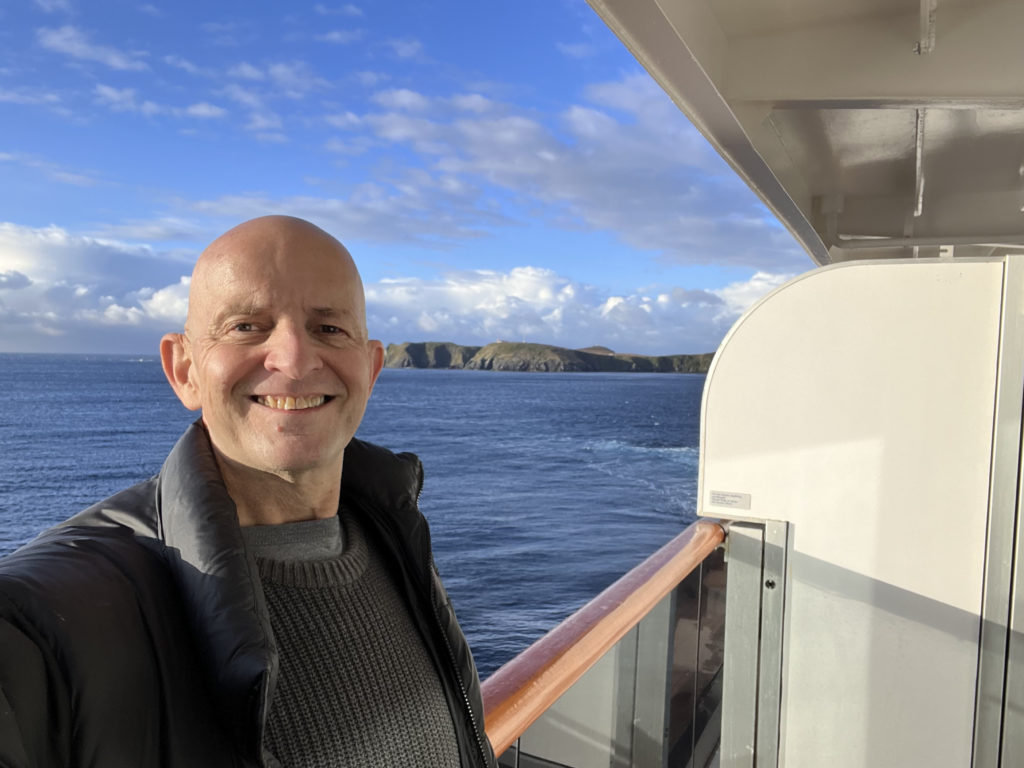
Port Talks and Scenic Cruising
That’s why on all the sea days, the main activity were detailed port talks by Kevin, the Cruise and Travel Director. An Argentinian who knew the region and ports in depth.
The other activity was taking in and watching the incredible scenery from the Crow’s Nest, out on the deck and even some days from the bow of the ship opened for sightseeing.
It also meant many sea days were early starts, not days to relax and lie-in. I was up between 6am to 7am on many sea day mornings to see things like the beautiful Amalia Glacier in the Sarmiento Channel Chile, and the 5 glaciers in Glacier Alley in the Beagle Channel.
But it also was the case even when cruising through the Chilean fjords itself, looking at the sights and for dolphins or whales, that did pop up at various times. And of course, that Cape Horn viewing.
So, the sea day experience was a key part of the trip. If you want a cruise to be entertained and lots of activities on sea days, this is not what this region is about. It’s about immersion and the sights. It was a tiring trip overall versus other regions, as in addition to early sea day starts, many excursions were early starts too. I had one even meeting at 6:15am!
Weather
The other thing that threw me, and other guests, way more than I expected, and was at times a challenge, was the weather.
It was unpredictable, colder, and wetter than I had thought, even though I had checked. While cruising here happens in their summer, the volatility impacted the trip in a few ways.
As it was summer, I thought of South America being very hot. Before I went many asked me if I had booked The Retreat, the paid-for area on Holland America with small cabanas, sun loungers and ability to lay about in the sun and have lunch there (like I had on my Christmas Mexican cruise).
I had not booked, as I’d looked at the weather and I knew it was going to be cold for periods of the trip, like 5C (41F). In fact, the retreat was totally closed, with the loungers and tables securely lashed down as the winds would’ve swept them away.
Though despite that chilliness, it was 30C (86F) in Santiago when I flew in and Montevideo and Buenos Aires at the end of the trip were up to 35C (95F). So, the wide range of temperatures, meant a big suitcase packed with clothes to deal with rain, cold, and incredibly hot days.
But what I hadn’t preempted, nor had many, was the impact of the wind.
Wind And Rough Seas
The wind created swells and for much of the trip the seas were rougher than I had expected. Although people were expecting Cape Horn to be bumpy, it was bumpy from the minute we left Valparaíso and stayed bumpy most of the way.
The open decks were often closed due to the wind, including for Cape Horn scenic cruising.
The bumpiness of the sea meant that the production shows were cancelled on two of the nights.
Wind also impacted excursions. In Punta Arenas I had booked a boat excursion to Magdalena Island to see the renowned penguin colony. We arrived at the boat to find the harbour master had closed all smaller ship activity due to the wind.
As I mentioned, wind and weather did not stop us getting into any ports though in some we were warned to listen out for the ship’s horn calling us back before scheduled all aboard time. The Captain did this in Port Stanley as wind was rising making tendering rough and more difficult, and we left over an hour early.
It did rain more than I expected, both on the sea days and when we were out on tours. I was glad I had packed a good raincoat.
Money Matters
Another thing that threw some was currency and money. Partly as we went to three different countries, Chile, the Falkland Islands, and Argentina, and all have their own currencies. And the US dollar, which I am used to be easily accepted in many places was not here.
Most stallholders, shops, taxis and so on had to be paid in local currency, and some didn’t take credit cards.
I did not want to take varying currencies and have some left over so arrived with none planning to get some on the ship. Though I found while ship did change the Chilean currency (at not great rates), they didn’t do Argentinean currency because that’s too complicated with different exchange rates, nor the Falkland pound.
With hindsight, I wish I had thought more about each port and what I would need money for, so I was better prepared with currency.
So, taking everything into account, am I glad I went? The history, landscapes, glaciers, volcanoes, penguins, and culture of the big cities will stay with me for years. So yes!
Will I do this itinerary again? Probably not. It was a once in a lifetime experience, literally. So, if you are going, make the most of it as it is incredible.
SUPPORT TIPS FOR TRAVELLERS
- Find out about being a Patron on Patreon: https://www.patreon.com/tipsfortravellers
- Check out my T-Shirt range: http://bit.ly/TFTStore
FOLLOW ME ON SOCIAL MEDIA
——————————————-
- YouTube: http://www.youtube.com/tipsfortravellers
- Twitter: http://www.twitter.com/garybembridge
- Facebook: http://www.facebook.com/tipsfortravellers
- Instagram: http://www.instgram.com/garybembridge
- LinkedIn: https://www.linkedin.com/in/bembridge
- TikTok: @garybembridge

